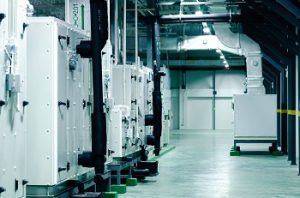
Smart devices and advanced automation are being integrated into HVAC systems making them more efficient and cost-effective. One of the key ways these technologies improve air conditioning, refrigeration, and heating is through precise temperature control. Automation helps fill the gap of worker shortages in the HVAC industry. Equipment and systems perform tasks that are ordinarily done by humans. Technologies and technicians’ services are changing rapidly in this growing industry. Read this blog to learn more about how HVAC automation is revolutionizing the industry and contact ITI Technical College today.
Automation Is Revolutionizing The HVAC Industry
 The residential, commercial, and industrial HVAC industries are making some key changes. One of them is changing customer demands for more energy efficiency and sustainability. This presents manufacturers and installers with opportunities to offer new products and services. Other reasons the industries are changing include:
The residential, commercial, and industrial HVAC industries are making some key changes. One of them is changing customer demands for more energy efficiency and sustainability. This presents manufacturers and installers with opportunities to offer new products and services. Other reasons the industries are changing include:
- Smart Technology – The popularity of smart technology and remotely controlled HVAC products is growing. Smart thermostats can adjust home and office temperatures for improved efficiency and predict when equipment and systems need maintenance.
- Indoor Air Quality – We see a growing concern about indoor air quality that is a driving and growth factor in the HVAC market.
- New Refrigerants – The industry is transitioning to new refrigerants to reduce its carbon footprint and improve system efficiency. Environmental regulations and technological advancements drive this change.
- Labor Shortages – Many HVAC technicians are retiring and there are not enough new workers to take their places.
- Supply Chain Crises – These up-and-down crises cause prices to increase and more effort is being expended to stabilize them.
How Automation Is Revolutionizing The HVAC Industry
Automated air conditioning (AC) systems offer convenience and efficiency by integrating advanced technologies to create seamless and user-friendly temperature control. Here are some significant advantages they offer us:
- They learn our habits and adjust temperatures to our preferences
- These systems can anticipate your needs while conserving energy and reducing costs
- They offer us ways to balance home and work comfort with sustainability
- Automation is applied to other smart home technologies including lights and security
- These systems work with a simple voice command or tap on our smartphones
Automated AC systems are made with advanced sensors, machine learning algorithms, and Internet of Things (IoT) connectivity. They work in harmony to monitor and adjust our temperature and humidity levels without human intervention.
Sensors are installed throughout a room or space to detect temperature, humidity, and occupancy changes. They feed the detected data into a central control unit that contains smart algorithms. This advanced system can adjust the AC settings automatically based on your indoor climate habits and preferences. The result is optimal efficiency and comfort.
|
“Smart devices and advanced automation are being integrated into HVAC systems that make them more efficient and cost-effective.” |
Refrigeration And Automation
 Automation has also entered many industries that use refrigerated systems, including florists, supermarkets, warehouses, hospitals, and laboratories. This HVAC advance provides many benefits other than better climate control, including:
Automation has also entered many industries that use refrigerated systems, including florists, supermarkets, warehouses, hospitals, and laboratories. This HVAC advance provides many benefits other than better climate control, including:
- Dynamic Cooling – Automation adjusts cooling levels during real-time conditions to improve comfort and productivity in businesses and homes.
- Energy Efficiency – This process reduces energy consumption by analyzing data gathered from sensors to optimize cooling performance and leave a smaller footprint.
- Improved Security – Refrigerated items are protected from thawing and going to waste by using surveillance cameras, biometric access controls, and integrated alarm systems.
- Predictive Maintenance – Automation predicts when a cooling system component may fail and notifies employees to minimize downtime and extend the equipment’s lifespan.
- Real-Time Monitoring – Automation provides accurate, real-time monitoring and adjustments in equipment and systems.
- Reduced Human Error and Waste – This technology can reduce the chances of human error, and spoiled, and wasted products.
Automation and smart technology can be integrated into existing refrigeration systems or new advanced systems can be installed. The best results are obtained when you work with qualified professionals to ensure correct installation, integration, performance, and training.
Other HVAC Trends In The News
There are other HVAC industry trends that are significant that will affect most of us. The first is the HVAC industry is growing by leaps and bounds. An industry survey reveals that many HVAC installers have shown 5% to 10% or more growth during the last four years. As the industry grows and competition heats up, consumers will benefit from new equipment and technologies.
A second trend is the growing number of people working in the HVAC industry. Although there is a current shortage in this workforce, approximately 1.5 million people in the U.S. are employed in this type of work. As more people are hired, they will think of new equipment, systems, and technologies that will benefit us all. Talk to one of our Admissions Representatives about our Air Conditioning, Refrigeration, & Electrical Technology (AOS) Associate In Occupational Studies Degree.
For more information about graduation rates, the median debt of students who completed the program, and other important information, please visit our website: https://iticollege.edu/disclosures/




